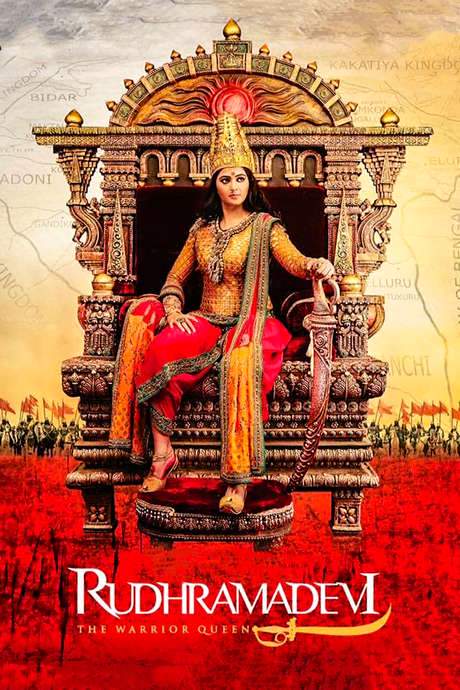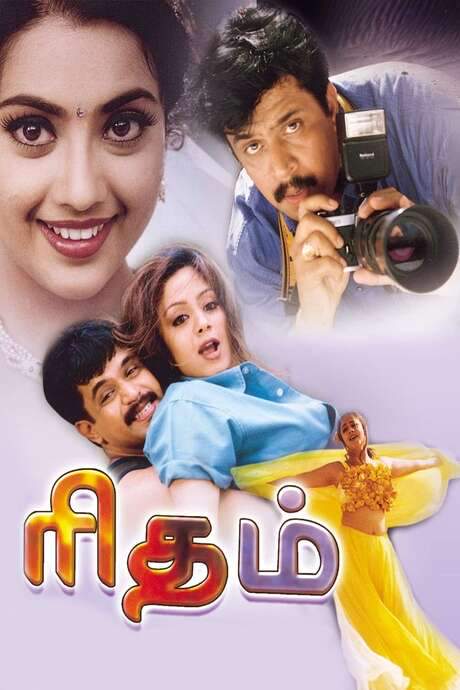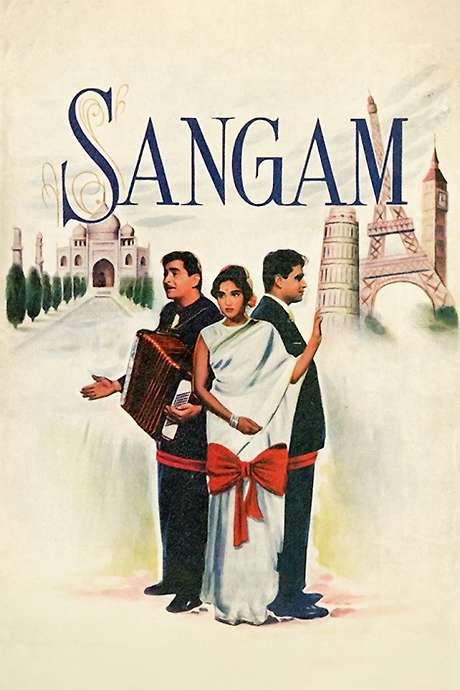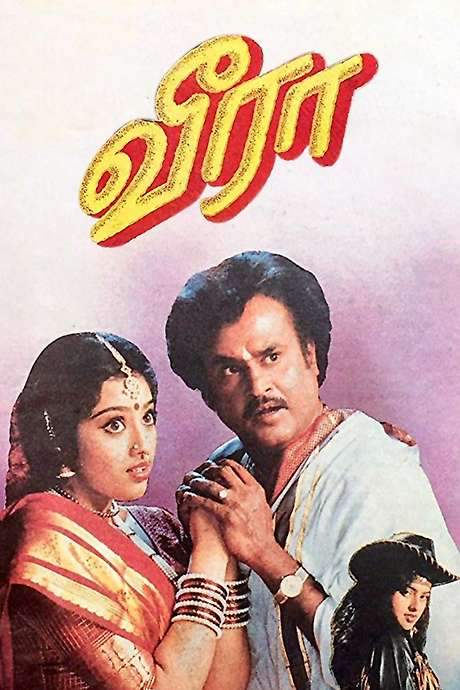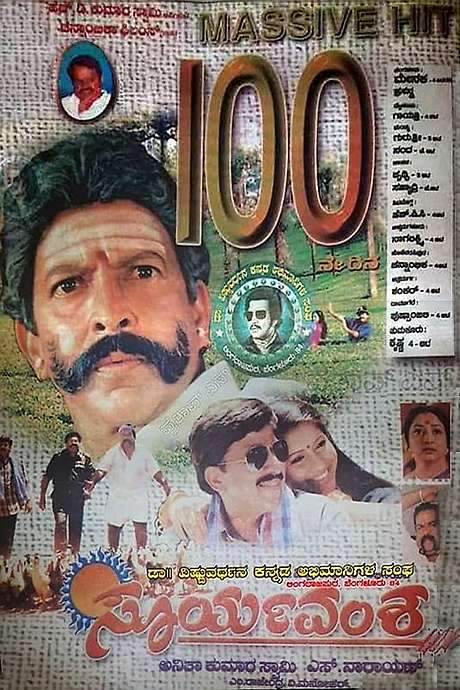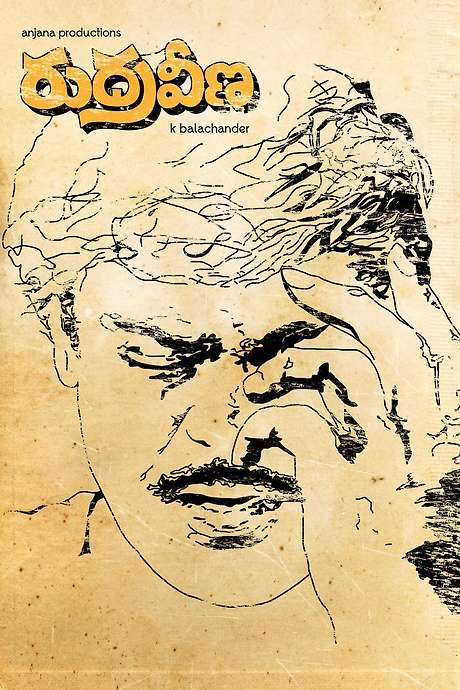
Rudraveena
Year: 1988
Runtime: 170 mins
Language: Telugu
Director: K. Balachander
Suryam, the son of a renowned musician, believes music can transform society. When his conservative father disapproves of his progressive ideas, Suryam leaves his home, determined to pursue his vision alone, using his art to challenge entrenched norms. He confronts societal complacency and the weight of tradition, striving to prove that melody can be a catalyst for change.
Warning: spoilers below!
Haven’t seen Rudraveena yet? This summary contains major spoilers. Bookmark the page, watch the movie, and come back for the full breakdown. If you're ready, scroll on and relive the story!
Rudraveena (1988) – Full Plot Summary & Ending Explained
Read the complete plot breakdown of Rudraveena (1988), including all key story events, major twists, and the ending explained in detail. Discover what really happened—and what it all means.
Satyanarayana, Satyanarayana, a seasoned and aging MP, arrives in Ramapuram to understand what has made this village a model of development and civility. After speaking with locals, he learns that Ramapuram’s progress is largely attributed to a single driving force: Suryanarayana “Suryam” Sastry. Curious, Satyanarayana invites Suryam to recount the village’s story for the parliament, and Suryam agrees, ready to share the experiences that shaped the town.
Suryanarayana “Suryam” Sastry is the son of a renowned carnatic music maestro, Bilahari Ganapati Sastry. The elder Sastry is respected for his musical genius but has a short temper and carries a habit of judging people by caste. Suryam has an elder brother, Udayam, who is mute yet adept at playing the nadaswaram, and a younger sister, Sandhya, who plays the tambura. Their mother figure in the family, Gayathri, married to Udayam, often acts as a mediator between siblings and their father, helping to ease tensions that arise from Sastry’s rigidity. Gayathri becomes a steady, calming influence and a bridge between the generations.
On a chance encounter near a temple, Suryam meets a dancer and learns her story: she is Lalitha Sivajyoti, a classical dancer from a lower caste who is denied entry to the temple. Her father, Varalayya, is a lawyer and social worker, portrayed as a person who strives for justice in his community; he is introduced as a figure of importance in this social drama. Varalayya plays a pivotal role in influencing Suryam’s decisions. Meanwhile, an amateur singer named Charukesa follows Sandhya and becomes a friend of the family’s circle; his character addition helps connect music and social reform within Ramapuram.
Encouraged by Gayathri, Suryam proposes to Lalitha, and the couple’s plan moves forward with hope and shared ideals. On his way back from a concert, Suryam stops to assist victims of a factory fire, an act that earns him both praise and pressure back home. Sastry’s anger and pride flare up in response to his son’s acts of mercy, creating a rift between father and son. When Sastry discovers Suryam and Lalitha together, the tension between tradition and reform intensifies, leaving Gayathri anxious and Udayam unfazed.
During another trip to a concert, Sastry refuses to aid an injured lineman named Narayana, a decision that further unsettles Suryam. The moral conflict deepens as Suryam argues that uplifting society should take precedence over ritual worship, which leads Sastry to declare Charukesa his successor as a musician—a decision that hardens the rift between generations and beliefs. Suryam challenges Sastry’s stance and eventually leaves home to pursue a path rooted in social service rather than music alone.
Suryam finds refuge with Varalayya and learns of Narayana’s widow, who laments the government’s denial of compensation because his drinking had occurred on the job. He also visits the family of Kishtappa, a survivor of the fire whose life has been deeply affected by alcohol. Observing these harsh realities, Suryam is moved to vow an ambitious mission: to abolish liquor in Ramapuram. He and Lalitha begin a concerted effort to persuade working-class men to abandon alcohol, and while they gain some early triumphs, the campaign faces significant backlash and obstacles.
Back at home, Sastry uncovers Charukesa’s relationship with Sandhya and responds with scorn and humiliation. The couple’s marriage is eventually arranged, but the cost is high, as Charukesa requests Sastry to renounce the Bilahari raga he has long championed as a professional duty. Sastry agrees only halfway, and Suryam attends the wedding, delivering a performance that is met with broad approval and renewed respect for his ideals.
With Varalayya’s plan to wed Suryam to Lalitha in motion, Sastry trims back his own expectations and is involved in the wedding’s broader social implications. A group of drunkards creates a disturbance, and they challenge Suryam to walk away from the marriage in exchange for their vow to stop drinking. Lalitha consents to Suryam’s decision, and he steps back, earning immense respect from the villagers for his selfless sacrifice. The spectacle ends with the realization that a life dedicated to the community can trump personal desire.
The couple’s ongoing project, the rural development movement named Lalitha Grameena Sveeyasikshana Udyamam, begins to show tangible results across Ramapuram, turning the tide toward sustainable change. Satyanarayana is delighted to see twenty-eight villages adopt Suryam’s methods, and he himself renounces alcohol as a sign of solidarity with the cause. The movement garners national attention, and the prime minister announces a felicitation in Ramapuram, recognizing the efforts of Suryam and his supporters.
All family members, including Charukesa, attend the ceremony, though Sastry arrives late and chooses to introduce himself not as a renowned musician but as Suryam’s father, signaling a shift in his own identity. He finally gives his blessing to Suryam’s marriage to Lalitha, much to the happiness of the villagers who have watched the transformation unfold. The narrative closes with the image of a village that has learned to balance culture, compassion, and community service, a testament to the enduring power of social change over personal pride.
Last Updated: October 09, 2025 at 14:18
Unlock the Full Story of Rudraveena
Don't stop at just watching — explore Rudraveena in full detail. From the complete plot summary and scene-by-scene timeline to character breakdowns, thematic analysis, and a deep dive into the ending — every page helps you truly understand what Rudraveena is all about. Plus, discover what's next after the movie.
Rudraveena Timeline
Track the full timeline of Rudraveena with every major event arranged chronologically. Perfect for decoding non-linear storytelling, flashbacks, or parallel narratives with a clear scene-by-scene breakdown.

Similar Movies to Rudraveena
Discover movies like Rudraveena that share similar genres, themes, and storytelling elements. Whether you’re drawn to the atmosphere, character arcs, or plot structure, these curated recommendations will help you explore more films you’ll love.
Explore More About Movie Rudraveena
Rudraveena (1988) Scene-by-Scene Movie Timeline
Rudraveena (1988) Movie Characters, Themes & Settings
Rudraveena (1988) Spoiler-Free Summary & Key Flow
Movies Like Rudraveena – Similar Titles You’ll Enjoy
Rudhramadevi (2015) Movie Recap & Themes
Rhythm (2000) Film Overview & Timeline
Mugavari (2000) Movie Recap & Themes
Sankarabharanam (1980) Movie Recap & Themes
Janbaaz (1986) Story Summary & Characters
Rudhra (1991) Detailed Story Recap
Rudhran (2023) Story Summary & Characters
Rudhra (1991) Detailed Story Recap
Sangam (1964) Spoiler-Packed Plot Recap
Rudaali (1993) Film Overview & Timeline
Unnal Mudiyum Thambi (1988) Detailed Story Recap
Navrang (1959) Story Summary & Characters
Anuradha (1960) Movie Recap & Themes
Veera (1994) Full Summary & Key Details
Suryavamsha (1999) Film Overview & Timeline



